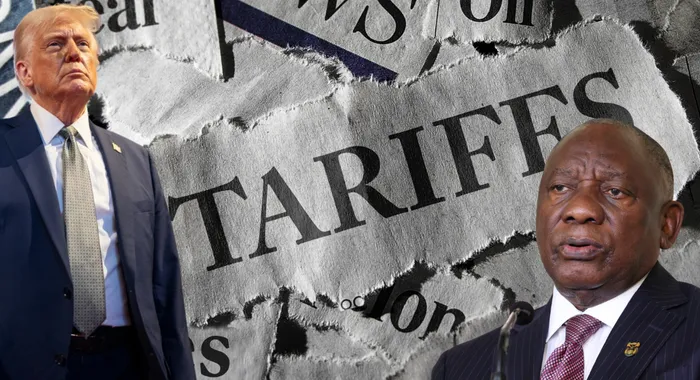The 30% U.S. tariff and Its global ripple effects
The U.S. absorbed 6.5% of South Africa’s vehicle exports
On August 1, the United States will impose a 30% tariff on select South African exports, a move the Trump administration frames as a corrective to trade imbalances but which South Africa decries as a unilateral overreach. President Cyril Ramaphosa has rejected the U.S. justification, noting that 77% of U.S. goods enter South Africa duty-free, with an average tariff of just 7.6%. Yet, the policy threatens to derail South Africa’s fragile economic recovery, destabilise global supply chains, and escalate protectionist tensions worldwide.

South Africa will be hit with a 30% tariff on all its exports to the United States from August 1, following a formal letter from US President Donald Trump to President Cyril Ramaphosa demanding action on trade imbalances and long-standing market restrictions.
Image: Lee Rondganger/IOL
This article examines the tariff’s sectoral impacts, systemic risks to multilateral trade, and strategic responses to mitigate the fallout.
South Africa’s automotive sector, a beneficiary of the African Growth and Opportunity Act (AGOA), faces existential risk. Reuters reported that the U.S. absorbed 6.5% of South Africa’s vehicle exports (worth $1.8 billion in 2024) and is a critical market for manufacturers like BMW and Ford. The 30% tariff could force plant closures and mass layoffs, eroding a sector contributing 5.2% to GDP.
The U.S. accounts for 5–6% of South Africa’s citrus exports ($100 million annually), supporting 35,000 jobs. Tariffs may cede market share to Chile and Peru.
Wine: Producers are scrambling to redirect stock or absorb price shocks, but the U.S. market’s premium margins are irreplaceable. High-value perishables face logistical hurdles in pivoting to new markets swiftly.
The textile sector may lose competitiveness in the U.S., while aluminum exports face a $534.5 million risk, with 24.6% going to the U.S. Furthermore, the South African Reserve Bank warns of 0.3% GDP contraction and 100,000 job losses. Fiscal strain from reduced export revenues and a weaker rand.
The tariffs will disrupt global logistics: Freight bottlenecks: A pre-tariff rush to ship goods to the U.S. has already caused 6–10-week delays on routes like China and South Africa. Cost inflation: U.S. consumers will pay more for South African goods, while businesses face redundant inventory and working capital crunches.
The U.S. has threatened an additional 10% tariff on BRICS-aligned nations, politicizing trade. South Africa may expand its exports by increasing trade with markets in the EU and Asia.
The trade deal reached on July 27, between the United States and the European Union will ease tariff barriers and improve market access between the two economies. For South Africa, this development could have significant ramifications.
First, EU exporters may displace South African goods in U.S. markets, particularly in competitive sectors like wine, citrus, and manufactured components. Second, the EU may divert more of its exports to the U.S., limiting the space for South African exports to expand into Europe. Unless offset by diplomatic interventions and aggressive trade diversification, this deal risks marginalizing South Africa in both the U.S. and EU markets simultaneously.
To navigate the crisis, South Africa must leverage trade finance tools: Export Credit Facilities: Bridge cash flow gaps for exporters facing margin compression.
The U.S. tariffs are a stress test for South Africa’s economic resilience. While the short-term pain is inevitable, strategic diplomacy, trade finance innovation, and market diversification could transform this threat into an opportunity for long-term resilience. The world will watch whether South Africa and the global trading system can adapt without fracturing further.
Nyaniso Qwesha, MBA, is a trade finance consultant with expertise in global commerce and risk management. He advises clients on trade policy, market access, and financial solutions in emerging economies.